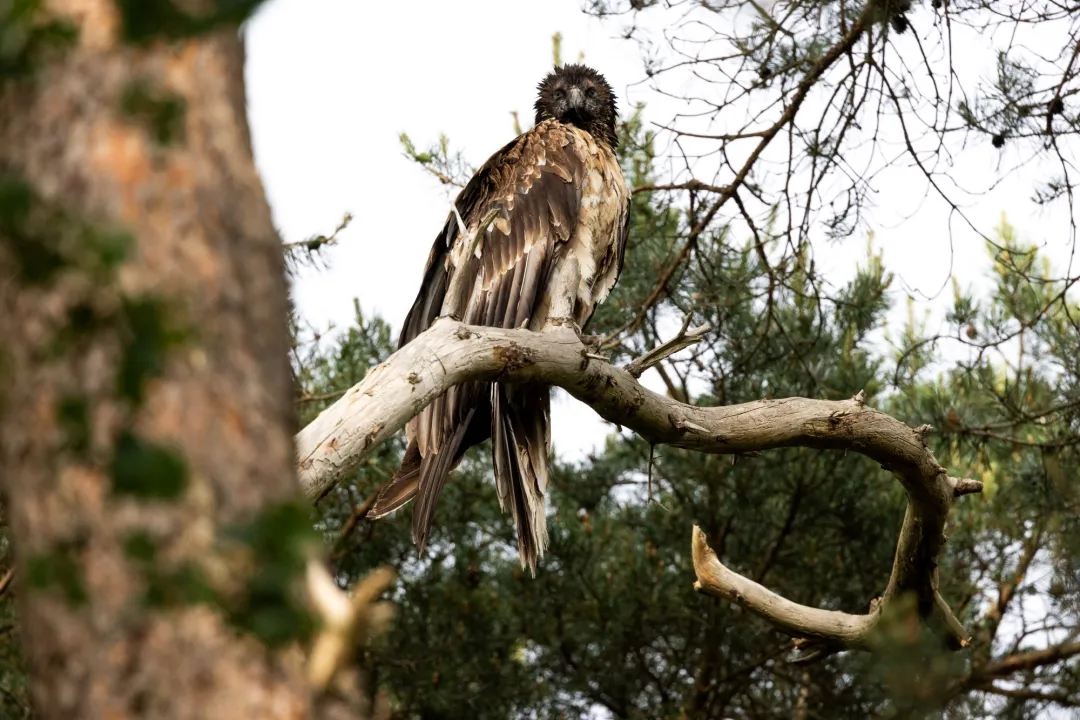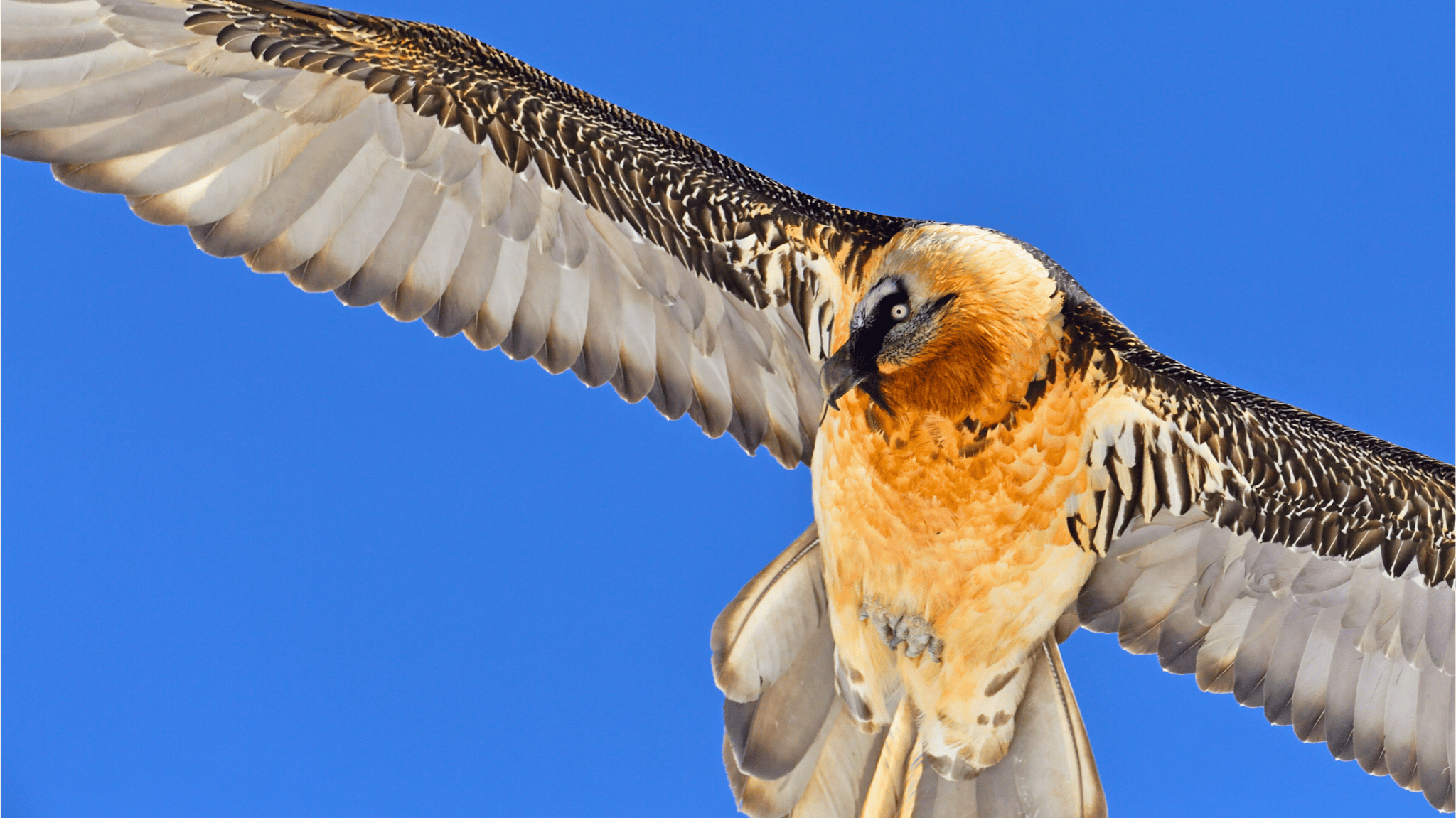
In the late 20th Century, Bearded Vultures in Europe were on the brink of extinction. Fast forward to today, and the species is making a steady recovery all thanks to an international partnership that has been breeding chicks in captivity and releasing them into the wild for decades. After successfully reintroducing the species to the Alps (where there are now 60+ breeding pairs) and Andalusia (4 breeding pairs and growing), conservation efforts continue and have expanded to several regions across France and Spain. This year hit a milestone. Not only is it the 35th anniversary since the first releases, but it is also the best release season to date, with the Vulture Conservation Foundation (VCF) and partners releasing a total of 24 young Bearded Vultures!
Bred in captivity for conservation purposes

The Bearded Vulture pairs in captivity, as well as the human keepers looking after them, have been extra busy for months. From autumn 2020 until the end of summer 2021, pairs have been conducting their parental responsibilities, which involved building nests, incubating eggs and rearing chicks, among other duties. The aim is for biological or foster parents to raise the young Bearded Vultures so that they behave like their wild conspecifics, enabling them to live and survive in the wild. Despite the extra challenges we faced once again due to COVID-19 related restrictions, this season was another fruitful one for the Bearded Vulture Captive Breeding Network (EEP – European Endangered Species Programme), coordinated by us at the VCF on behalf of EAZA (European Association of Zoos and Aquaria) – 31 chicks hatched and 26 survived!
Releasing 23 captive-bred Bearded Vultures into the wild
The first release took place on 25 April in Grands Causses and the last one on 30 July in Cazorla, closing extremely prolonged breeding and release seasons. From the 26 chicks produced, the Bearded Vulture EEP assigned 23 to five ongoing reintroduction and restocking projects: four in the Alps (two in Switzerland and two in Germany – a new release site), two in Corsica, seven within the framework of LIFE GypConnect (five in the Grands Causses and two in Vercors), three in Maestrazgo and seven in Andalusia. The remaining three, all females, became part of the network with the hope to one day become parents themselves, providing young ones to support the conservation of their own species.
A special case: from the wild to captivity to the wild again!
This time around, we had a special case. In addition to the 23 captive-bred birds, one of the Bearded Vultures released came from a wild nest in the Catalan Pyrenees. One of his parents disappeared when he was 32-35 days old in the nest. While the other parent did its best to feed him, the chick spent most of the time alone and was in danger of predation or dying from hypothermia. After a field team noticed the situation, they mobilised an emergency rescue mission and saved his life. The chick quickly made a recovery and travelled to the Guadalentín centre, where the expert team reared it without human contact. Eventually, they released the young vulture in Andalusia, providing a new genetic contribution to the project!
Some Mortality
Unfortunately, as it happens in most years, some of the released Bearded Vultures suffered some mortality – 4 Bearded Vultures died and was rescued and now remains in the Bearded Vulture EEP.
This year Corsica fared worst – one of the two birds released this year fledged on the 13th and was found dead on the 17th in a rather decomposed state. The cause of death is still unknown as the first toxicological analysis came negative. The other bird released in Corsica suffered from a broken leg two weeks after fledglings and was taken back to captivity.
In Maestrazgo, a one-month-old fledgling suddenly died at the hacking cave in one of his visits there. In the morning, the bird was flying with the other two juveniles. He entered the hacking cave and ate from the feeding site. After 30 minutes, he suddenly made movements suggesting he wanted to expel a pellet, and during one of these attempts he suddenly fell backwards and died. The following day, experts performed a necropsy and the results did not indicate anything abnormal, only an old wound on the skull. The entire stomach, including its contents, has been sent to a laboratory for analysis.
In the Grands Causses, they suffered the loss of the two released birds in the hacking cave before fledging. According to necropsy and based on bite marks on its neck and one leg, one bird was killed by one predator, likely a fox or a mustelid, five days after it entered the hacking cave. The second bird showed signs of sickness two weeks after introducing to the hacking cave. Due to not eating enough, it entered a recovery centre, and the first laboratory results showed an infection and liver problems. But despite all the best efforts to save it, the Bearded Vulture died in the end.
All the other 19 Bearded Vultures remaining are doing well.
Here’s to more years of conservation optimism

It takes time and perseverance to reintroduce and restock Bearded Vulture populations to the wild since they only reproduce when they reach around ten years old, with one chick surviving per year. But with diligence, dedication and collaboration, it is possible for this magnificent bird to make a recovery. Since 1978, together with our partners, we bred 611 chicks in captivity and released 368 young across several European regions. We will continue to do so until Bearded Vulture populations become self-sustaining and healthy!






